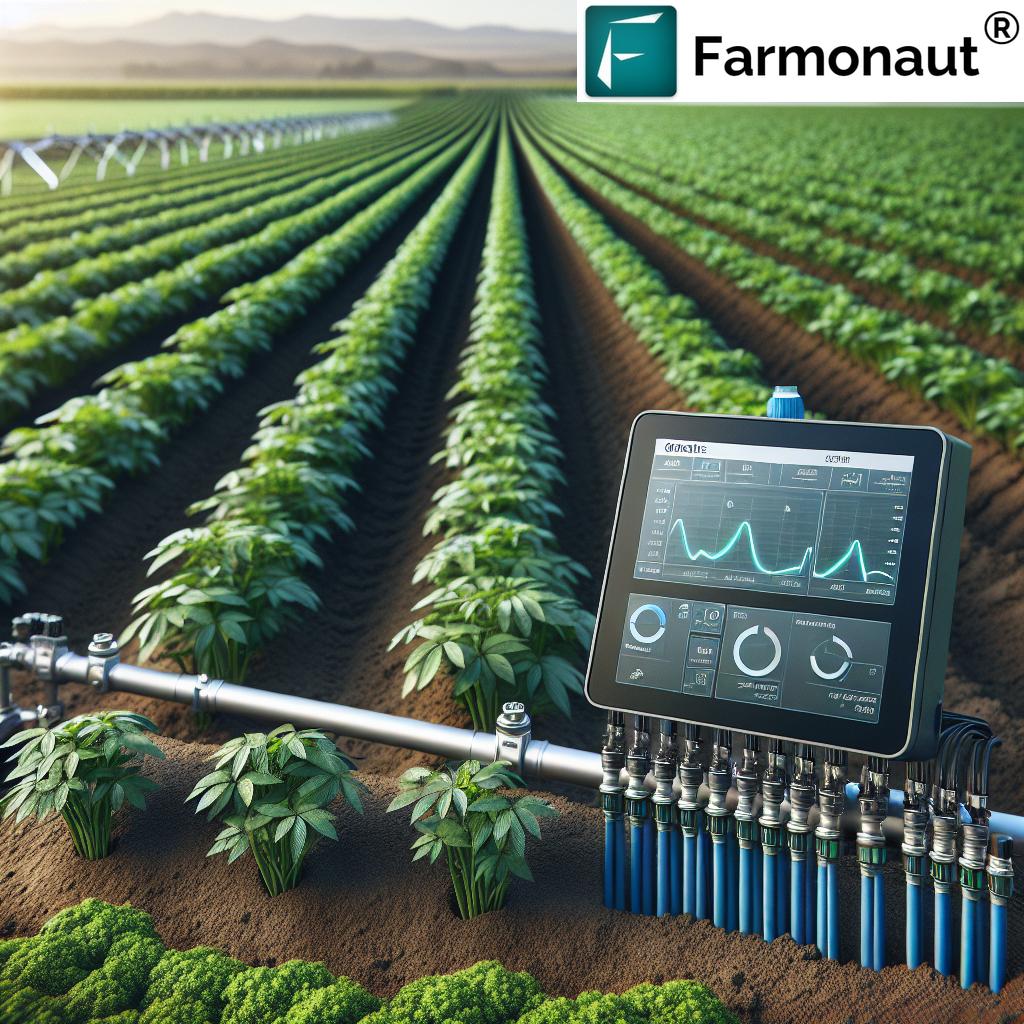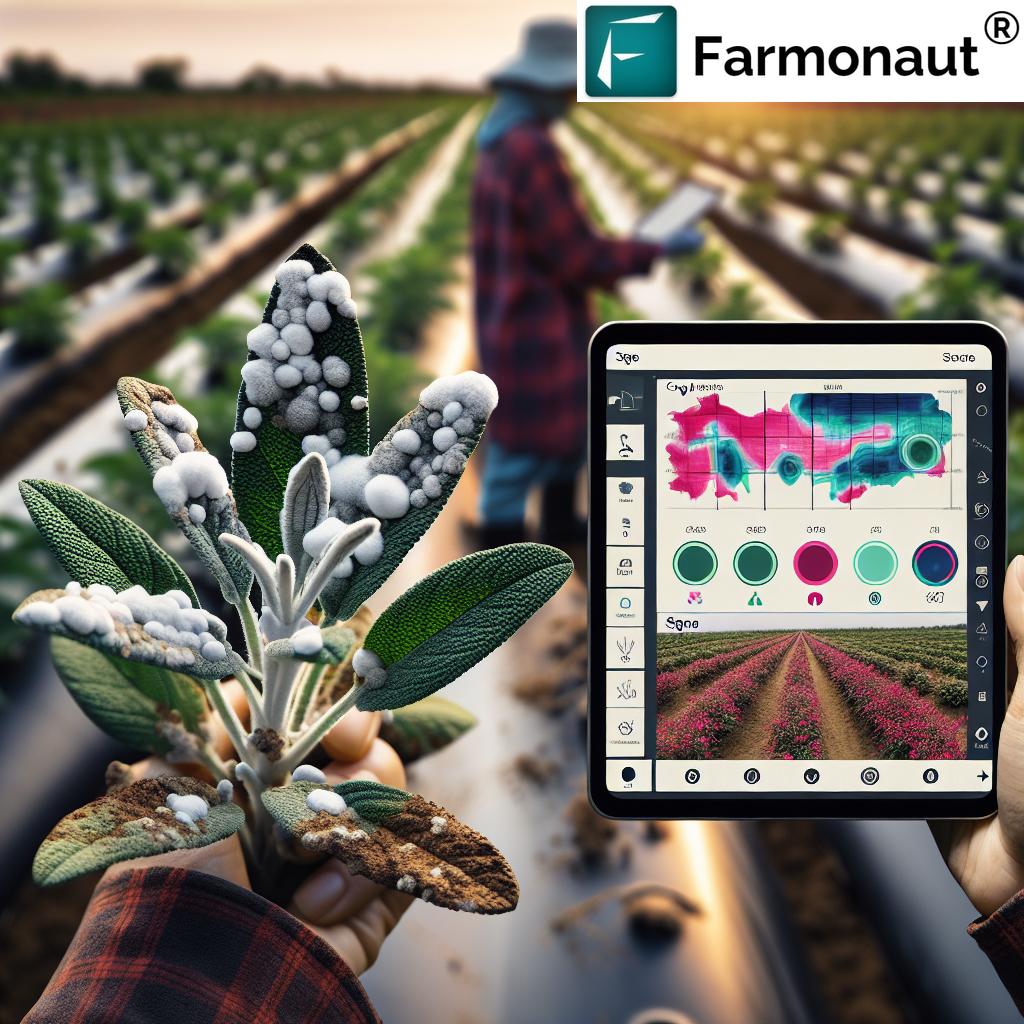Banana Mold on Stem: 5 Expert Ways to Boost 2025 Yield
“Banana stem mold can reduce yield by up to 30% per acre if not detected and managed with advanced technology.”
Introduction: The Vitality of Banana Cultivation
Banana (Musa species) remains a vital agricultural activity worldwide, particularly in tropical and subtropical regions where its cultivation provides food security and supports millions of farmer livelihoods. In 2025 and beyond, meeting the demand for this nutritious fruit means not just increasing banana crop yield per acre but tackling the host of challenges posed by banana tree diseases—especially the banana mold on stem, black spots on banana tree leaves, and banana leaf blight.
Yet, these diseases are more than a nuisance—they are a direct threat to crop health, economic sustainability, and the food supply chain. As climate conditions shift and agricultural intensification rises, banana farming faces increasing risk from fungal, bacterial, and even viral pathogens.
This comprehensive guide explores the causes, symptoms, crop yield impacts, and—most importantly—the advanced technology-driven solutions available to modern farmers for healthy, productive banana plantations in 2025.
Understanding Banana Tree Diseases: Causes & Symptoms
Banana trees, while resilient in many ways, are highly susceptible to a range of fungal, bacterial, and viral diseases that manifest through visible symptoms, including banana mold on stem, black spots on banana tree leaves, and banana leaf blight.
Let’s break down the main banana diseases, what causes them, and how they impact plant health:
Banana Mold on Stem
- Caused by: Fungal species such as Fusarium oxysporum (Fusarium wilt) or Penicillium species.
- Symptoms: Powdery or slimy mold appears on banana stems, disrupting nutrient flow and eventually causing stem rot. Plants show yellowing, wilting of leaves, and may die if untreated.
- Consequence: This disease can quickly affect banana crop yield per acre by causing death or severe stunting of infected plants.
Black Spots on Banana Tree Leaves (Black Sigatoka)
- Caused by: The fungus Mycosphaerella fijiensis.
- Symptoms: Small, dry, dark spots on banana leaves that expand and coalesce, causing large, necrotic areas. This restricts photosynthesis and leads to premature leaf death.
- Ideal Conditions: Thrives in humid, warm climates—typical of major banana-growing regions.
- Crop Impact: Black Sigatoka can reduce banana yields by up to 50% if not effectively managed.
Banana Leaf Blight (Xanthomonas campestris pv. musacearum)
- Caused by: Bacterial infection.
- Symptoms: Water-soaked lesions appear on leaves, which expand, turn brown, and result in leaves curling and drying out.
- Effects: Significantly weakens plant vigor, making banana plants vulnerable to secondary pathogens and further reducing crop yield per acre.
Other Banana Tree Diseases to Note
- Panama Disease: Also caused by Fusarium oxysporum (different strain), leads to wilt, stem rot, and plant death.
- Anthracnose: Fungal pathogen leading to fruit blemishes and stem cankers.
- Yellow Sigatoka: Another leaf spot disease, less destructive than Black Sigatoka but still detrimental under the right conditions.
Whether in India, Africa, or Latin American regions, banana mold on stem, banana tree diseases, and associated symptoms require prompt attention to prevent the escalation of fungal and bacterial infections that can devastate banana farming operations.
Impact of Banana Mold on Stem and Other Diseases on Crop Yield
The health of banana plants directly determines crop productivity and economic returns for farmers across tropical and subtropical regions. Understanding the quantitative and qualitative impact of stem molds, black spots, and leaf blights is essential:
- Yield Losses: Infected banana plantations can lose 30-50% of yield per acre, especially when banana mold on stem or black Sigatoka go unchecked.
- Fruit Quality: Stem mold spoils the appearance and reduces the shelf life of banana bunches, resulting in post-harvest economic losses.
- Long-term Sustainability: Diseased banana trees are more susceptible to secondary pests and pathogens, threatening plantation longevity and food security.
Effective management of banana tree diseases is thus non-negotiable for sustainable banana cultivation in 2025 and beyond.
“AI-powered disease detection boosts banana crop health, reducing black spot incidence by 40% in precision-managed farms.”
Comparative Table of Banana Stem Diseases and Advanced Detection/Control Strategies
| Disease | Estimated Yield Loss per Acre (%) | Traditional Detection Method | Advanced Detection/Control Technology | Expected Yield Improvement (%) |
|---|---|---|---|---|
| Banana Mold on Stem | Up to 30% | Visual inspection for mold and stem wilting | Satellite & AI detection, gene-edited resistant cultivars, biological agents | 25-35% |
| Black Spots on Banana Tree Leaves (Black Sigatoka) | Up to 50% | Field scouting for leaf spots and blight symptoms | Multispectral satellite imagery, precision spraying, CRISPR-based resistant varieties | 35-50% |
| Banana Leaf Blight | 20-30% | Visual observation, symptom documentation | AI for image-based diagnosis, targeted chemicals/biological control, blockchain traceability | 20-30% |
| Fusarium Wilt (Panama Disease) | 60-100% (in susceptible plantations) | Wilting pattern observation, laboratory confirmation | Gene-editing, resistant cultivars, real-time monitoring | 70-90% |
Advanced Technology Innovations for Banana Disease Management in 2025
Combating banana tree diseases for higher yields in 2025 is powered by a suite of new innovations:
- Satellite Imagery: Delivers real-time field monitoring, detects banana mold on stem and leaf symptoms before they escalate.
- AI Disease Detection: Mobile and web apps like Farmonaut’s platform can process crop images and satellite data for early disease identification—saving entire harvests.
- Blockchain Traceability: Ensures disease-free supply chains; tracks banana batches exposed to blight or black spots back to origin. See more about blockchain product traceability for agriculture.
- Gene-Edited Cultivars: CRISPR-enabled banana varieties resist Fusarium, Black Sigatoka, and other pathogens, reducing chemical use and boosting sustainable yield per acre.
- Environmental Impact Tools: Quantifies carbon footprint of disease management. Learn how carbon footprinting tools help farmers meet sustainability targets.
Farmers in 2025 and beyond can leverage these innovations together—rather than relying solely on chemical treatments—to win the battle against banana stem mold, leaf blight, and other diseases.
5 Expert Ways to Boost Banana Crop Yield per Acre in 2025
Based on the latest research and technology trends, here are the five most effective methods to tackle banana tree diseases and improve crop yield per acre sustainably for the upcoming seasons:
1. Early Detection with Satellite and AI Tools (Banana Mold on Stem & Leaves Symptoms)
- Challenge: Delayed detection of banana mold on stem, black spots, or banana leaf blight leads to rapid field-wide infection and severe losses.
- Solution: Implement satellite-based remote monitoring and AI-powered image analysis apps for banana disease detection—field scouting is now digital, accurate, and continuous.
- Benefit: Farmers can act within days of disease occurrence, rather than waiting for symptoms to become visible by eye. This reduces the risk of banana crop yield per acre loss by up to 35%.
- Platform: Farmonaut’s real-time crop monitoring apps allow growers to check banana plant health NDVI, detect mold outbreaks, and optimize interventions—directly from phone or browser.
Advanced Example: By integrating Farmonaut crop health API with farm management platforms, plantations can automate alerts for banana diseases using NDVI changes and historical symptom progression detected via satellite.
2. Adoption of Resistant Varieties & Gene-Editing
- Challenge: Traditional banana cultivars are highly susceptible to Fusarium, black Sigatoka, and leaf blight, requiring persistent chemical inputs.
- Solution: Shift to disease-resistant banana varieties and CRISPR gene-edited cultivars, which naturally withstand key banana tree diseases and limit crop losses.
- Benefit: Resistant cultivars reduce dependence on fungicides and bactericides, lower production costs, and support sustainable, long-term farming.
- Outlook 2025: More broadly available and affordable gene-edited bananas, adapted for both Asian and African banana-growing regions.
Farmers should stay updated with national agricultural research organizations for new, locally-adapted disease-resistant cultivars released for their regions.
3. Integrated Cultural and Biological Practices
- Field Sanitation: Remove and destroy infected banana plant debris (leaves, stems) to reduce inoculum.
- Crop rotation & Spacing: Rotate banana with non-host crops; maintain adequate spacing between banana trees for air circulation which reduces humid microclimates—unfavorable for disease.
- Biological Control: Deploy beneficial microbes like Trichoderma spp. to antagonize fungal pathogens on banana stems and leaves, offering a green alternative to synthetic chemicals.
- Regular Monitoring: Use satellite- or drone-assisted field surveys for scouting symptoms of mold, black spots, and blight at scale.
These cultural and biological practices not only reduce the pressure of banana tree diseases but also delay the onset of resistance to chemical controls.
4. Smart Chemical Control and Resistance Management
- Appropriate Fungicide Use: Utilize systemic fungicides like triazoles or strobilurins specifically on early-identified infections. Rotate products to prevent resistance buildup.
- Targeted Application: Apply chemicals based on satellite analytics or AI advisories to affected banana plantation zones only—avoiding unnecessary environmental impact and saving costs.
- Integrated Strategies: Combine with biological and cultural controls (see above) to extend chemical effectiveness and preserve yield gains.
In 2025, precision agriculture tools—like those found in the large scale farm management suite—let plantation managers track disease progression, schedule fungicide interventions, and generate compliance logs for traceability.
5. Blockchain Traceability & Crop Insurance for Risk Mitigation
- Traceability: Use blockchain-driven product traceability to trace back banana batches to source plantations, ensuring compliance with disease-free certifications and opening new export markets. Learn more about blockchain traceability.
- Insurance: Satellite-based verification and monitoring reduce fraud in crop insurance claims. Banana farmers can access risk coverage more affordably and quickly.
Explore satellite-verified crop insurance solutions. - Fleet Resource Management: Smart tracking for farm vehicles and equipment supports timely intervention during outbreaks. Optimize resource deployment with fleet management technology for agriculture.
Together, these advanced controls not only reduce crop loss from banana mold on stem and blight but also boost financial resilience for farmer livelihoods in the face of disease-related shocks.
Farmonaut Subscriptions – Get Advanced Disease Detection for Your Banana Crop
How Farmonaut Empowers Banana Farmers with Technology
At Farmonaut, we are committed to making satellite and AI-driven crop health insights accessible and affordable for banana farmers, large plantations, and agribusinesses worldwide, including those combating mold on stem, black spots, and leaf blight.
Our platform leverages multispectral satellite imagery and real-time analytics to monitor banana crop health, detect early symptoms of banana tree diseases, and support timely interventions.
Key tools and benefits include:
- Real-time Monitoring: Assess and visualize plantation health, spotting subtle yellowing, wilting leaves, or powdery mold growth on stems before major outbreak.
- AI-Driven Advisory: Get custom crop advisory tailored to your regional disease threats—available through our Android/iOS and web/app platforms.
- Blockchain Traceability: Ensure transparency for harvested banana batches to improve market trust, particularly where export certification is required.
- Environmental Compliance: Our carbon footprinting tools help banana growers track and reduce their environmental impact, meet regulations, and safeguard natural resources for future cultivation.
- API Access: Seamless integration with your agricultural systems or management dashboards via Farmonaut API. Read the developer documentation here.
- Scalable Solutions: Whether managing a single farm or multiple plantations, our platform scales to fit your operation—from family-owned fields to industrial banana farming enterprises.
Transform your approach to banana disease management with Farmonaut’s all-in-one toolkit—and secure a future of higher yield, healthier crops, and better economic returns despite the mounting disease challenges.
Frequently Asked Questions: Banana Mold on Stem, Black Spots & Disease Control 2025
-
What are the main symptoms of banana mold on stem?
Banana mold on stem appears as powdery or slimy growths on banana stems, often caused by Fusarium oxysporum or Penicillium species. Infected plants usually exhibit yellowing and wilting leaves, stem rot, and may eventually die if untreated.
-
How do black spots on banana tree leaves affect crop yield per acre?
Black spots are commonly caused by Black Sigatoka (Mycosphaerella fijiensis). These reduce the effective photosynthetic area, lead to premature leaf death, and can halve yield per acre in severe outbreaks.
-
What advanced detection methods are available for banana tree diseases in 2025?
In 2025, cutting-edge solutions include satellite-based monitoring, AI-powered disease detection apps, and gene-edited resistant cultivars. Farmonaut provides apps and APIs for real-time crop health assessment.
-
Can biological control replace chemical fungicides for banana farming?
While not a complete replacement, biological controls (like Trichoderma spp.) significantly reduce fungal and bacterial disease pressure. The best results are seen with an integrated disease management approach combining biological and chemical methods as needed.
-
How does blockchain traceability help banana farmers facing disease outbreaks?
Blockchain ensures transparent tracking of banana batches from farm to market. This helps prevent spread of diseased fruits and assures buyers of banana quality, making it essential for market access in regions affected by stem mold or blight.
-
Is there insurance available for banana crop loss due to banana mold on stem?
Yes, satellite-based crop insurance verification (like that offered through Farmonaut’s crop loan and insurance portal) can help banana farmers quickly access payouts for losses caused by disease outbreaks.
-
What mobile apps can assist in early banana disease detection?
Satellite and AI-driven mobile apps, including those provided by Farmonaut (available for Android and iOS), offer real-time monitoring, advisory notifications, and disease detection for banana and other crops.
Conclusion: Future-Proofing Banana Yields Against Disease
Banana mold on stem, black spots on banana tree leaves, and banana leaf blight are significant threats to global banana crop yield per acre—impacting food security and farming livelihoods well into 2025 and beyond. But by integrating satellite technology, AI disease detection, gene editing, and advanced traceability platforms, modern banana farmers can confidently achieve higher and more consistent yields.
Moving forward, it is not enough to rely on traditional visual inspection or sporadic chemical sprays. New agricultural intelligence and real-time remote sensing are the cornerstone of sustainable banana cultivation—ensuring that early disease outbreaks are controlled, yield per acre is preserved, and plantations stay resilient against future pests and pathogens.
To safeguard your banana farm, embrace advanced monitoring, choose resistant cultivars, optimize interventions with data, and leverage technology-backed insurance and traceability. Farmonaut is here to play a pivotal role—enabling banana farmers, agribusinesses, and governments to thrive despite changing diseases, markets, and climate. Take the next step in protecting your crop and boosting profitability for years to come.














